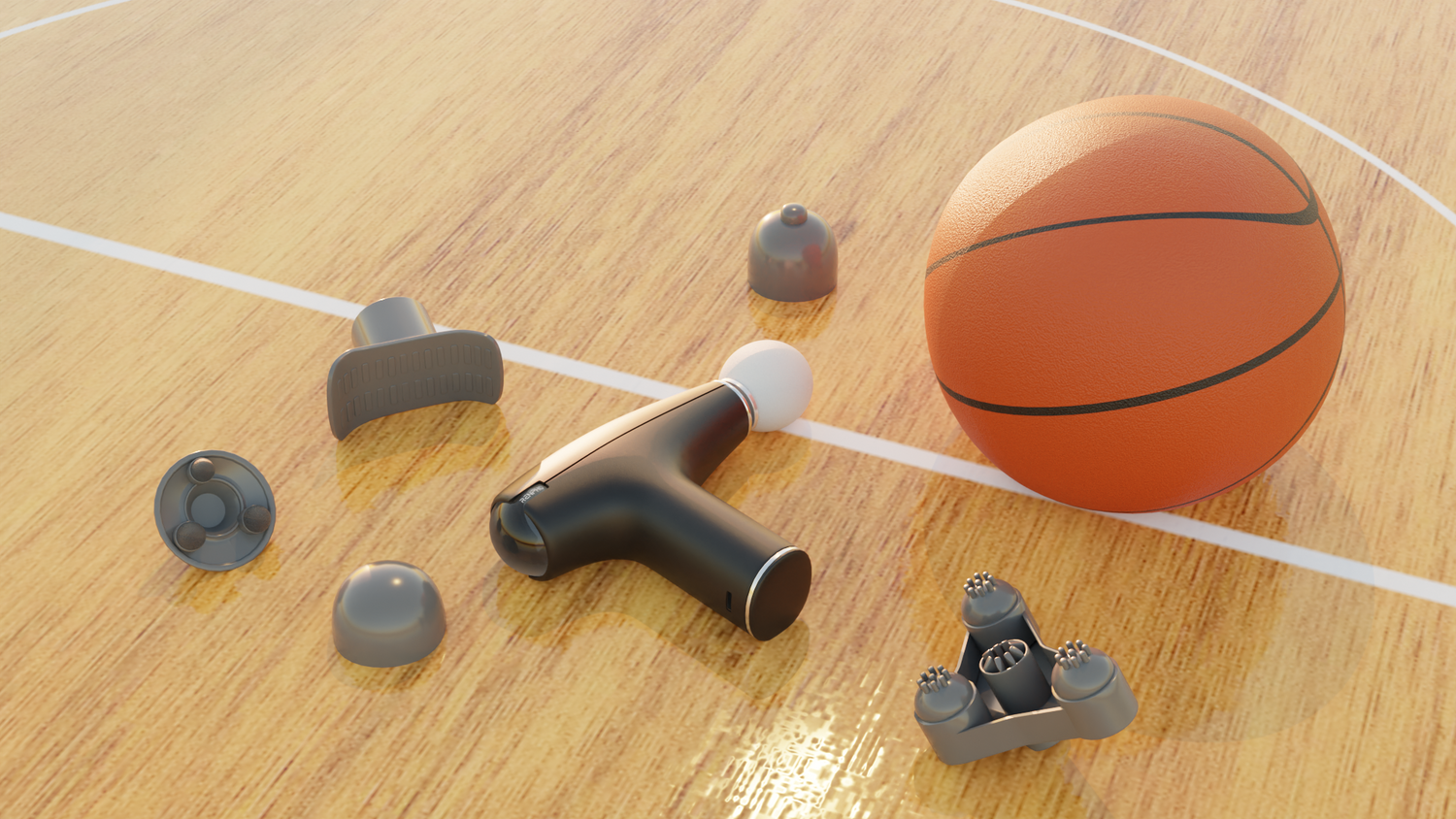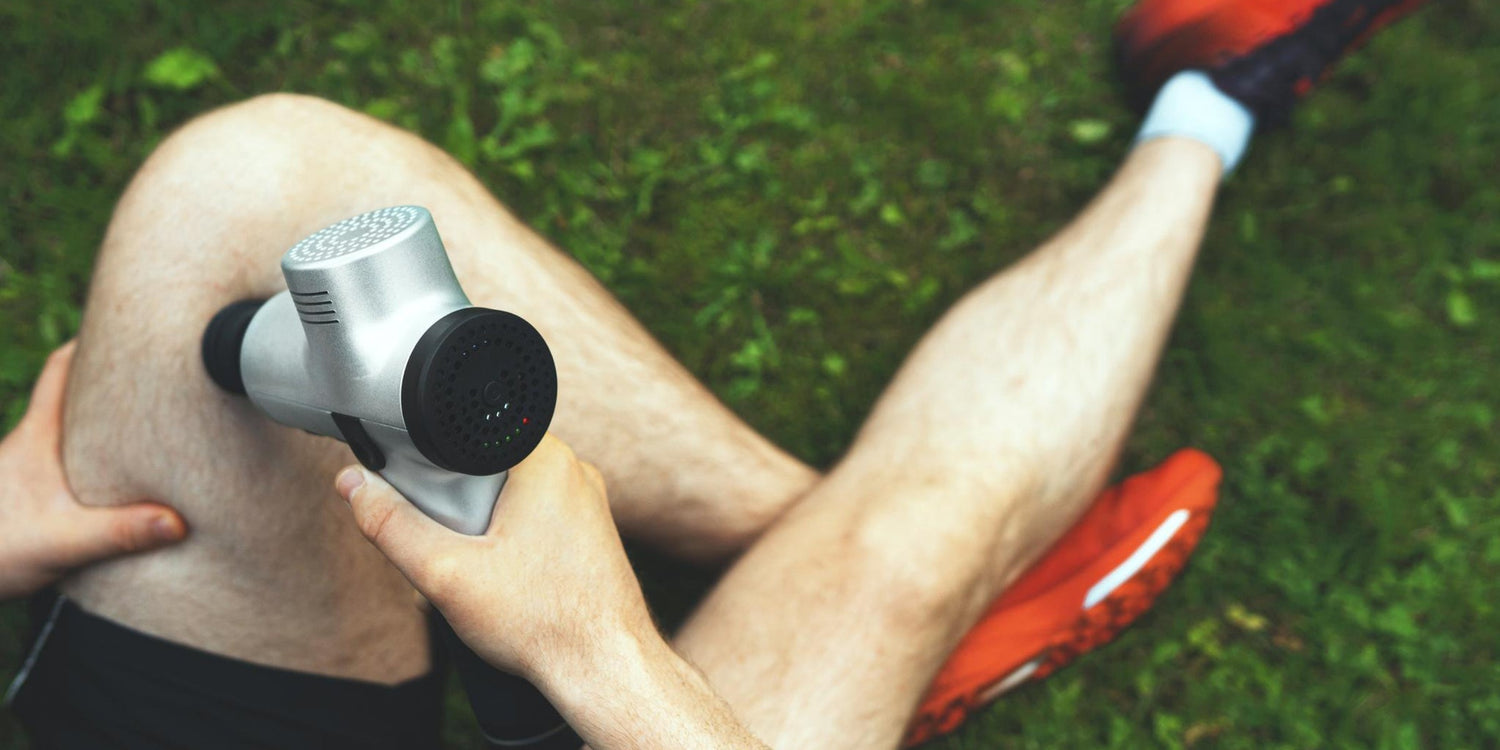If you're one of the millions of people suffering from the debilitating pain of plantar fasciitis, you know how crucial proper treatment can be. While podiatrists and physical therapists can provide professional care, finding effective relief at home is key to managing this stubborn foot condition.
Enter the percussion massager - a powerful tool that's quickly becoming a game-changer for those seeking to take control of their plantar fasciitis.
How can this tool help you with plantar fasciitis? Let’s discover how percussion massage can target the root causes of your plantar fasciitis pain. Whether you're new to the world of percussion therapy or simply looking to optimize your existing regimen, this guide will equip you with the knowledge and confidence to get into an active lifestyle. Get ready to say goodbye to heel pain and hello to pain-free steps - your feet are about to thank you in a big way.
What is Plantar Fasciitis?

Plantar fasciitis is a common and often painful condition affecting the foot, characterized by inflammation of the plantar fascia, a thick band of tissue that connects the heel bone to the toes. This condition typically arises from repetitive strain or excessive pressure on the plantar fascia, leading to microtears and inflammation. Individuals suffering from plantar fasciitis often experience sharp heel pain, particularly with their first steps in the morning or after prolonged periods of sitting. While it can affect anyone, it is more prevalent among those who are physically active, overweight, or wear improper footwear. Understanding the causes, symptoms, and treatment options for plantar fasciitis are essential for effective management and relief from this debilitating condition.
What Are the Symptoms and Causes of Plantar Fasciitis?
Plantar fasciitis is characterized by heel pain and arch pain, often resulting from inflammation of the plantar fascia, the thick band of tissue that runs along the bottom of the foot. Symptoms typically manifest as sharp pain, particularly noticeable upon taking the first steps in the morning or after prolonged periods of inactivity. Stiffness in the foot can also occur, making activities like climbing stairs challenging and uncomfortable.
Several causes contribute to plantar fasciitis, including high-impact activities—such as running and jumping—that put a strain on the foot. Structural foot problems, like flat feet or high arches, can increase susceptibility, along with tight Achilles tendons that exacerbate pressure on the plantar fascia. Wearing unsupportive shoes, such as flip-flops or worn-out sneakers, further elevates the risk of developing this condition.
Why Is It Important to Treat Plantar Fasciitis?
Treating plantar fasciitis is crucial due to the potential long-term effects of untreated pain. The debilitating heel and arch pain caused by this condition can make even basic activities, like walking or standing, incredibly uncomfortable, severely limiting one's mobility and physical function. Without proper intervention, individuals may experience chronic discomfort, leading to reduced mobility and altered gait patterns that can further result in additional foot and lower limb issues. This pain can hinder daily activities and diminish overall quality of life.
Beyond the physical impacts, the economic burden of plantar fasciitis can also be substantial, including medical expenses, lost productivity, and reduced earning potential.
Early treatment plays a vital role in preventing further complications. Doing so not only alleviates pain but also improves foot health, promoting better alignment and function. Options like rest, stretching, and physical therapy are effective in managing symptoms and facilitating recovery. By addressing plantar fasciitis promptly, individuals can restore mobility and continue to lead active lifestyles.
How Is Plantar Fasciitis Traditionally Treated?

Plantar fasciitis is a common and often painful condition that affects the heel and bottom of the foot, resulting from inflammation of the plantar fascia. Traditional treatment methods aim to relieve pain, reduce inflammation, and promote healing, allowing individuals to return to their daily activities with greater comfort. As plantar fasciitis can significantly impact mobility, these treatments typically combine non-invasive strategies and conservative management techniques.
Traditional treatments for plantar fasciitis typically involve a combination of approaches. One of the first steps is to reduce activities that aggravate the condition, such as high-impact exercises or prolonged standing, allowing the plantar fascia to rest and begin the healing process.
Applying ice packs to the affected area can help reduce inflammation and pain, while heat therapy can increase blood flow and promote healing. Healthcare providers often prescribe specific stretching and strengthening exercises to target the plantar fascia, Achilles tendon, and surrounding muscles.
Wearing shoes with good arch support or using custom orthotics can also help alleviate pressure on the plantar fascia and improve overall foot biomechanics. Over-the-counter anti-inflammatory medications, such as ibuprofen or naproxen, can provide pain relief, and in more severe or persistent cases, corticosteroid injections may be administered to reduce inflammation.
Additionally, wearing a night splint that gently stretches the plantar fascia can help reduce morning pain and stiffness. Working with a physical therapist can provide a comprehensive treatment plan, including manual therapy techniques, ultrasound, and personalized exercise programs.
In many cases, a combination of these traditional treatment methods is required to effectively manage plantar fasciitis and provide long-term relief, though some individuals may still struggle with persistent or recurrent symptoms.
Can Regular Massage Therapy Sessions Help With Plantar Fasciitis?
Regular massage therapy can significantly benefit individuals suffering from plantar fasciitis by alleviating pain, reducing stiffness, and improving blood circulation to the affected areas. The targeted manipulation of muscles and soft tissues around the feet and calves helps release tension and break up tightness, leading to enhanced mobility and comfort.
Incorporating calf massage into your routine is crucial, as tight calf muscles can contribute to plantar fasciitis. Additionally, pairing massage therapy with stretching exercises can further enhance recovery by promoting flexibility and reducing strain on the plantar fascia.
Using tools like calf massagers can amplify these benefits by providing consistent pressure and aiding in muscle relaxation, making it easier to incorporate self-care into daily routines. For optimal results, it’s recommended to engage in regular massage therapy sessions, ideally once or twice a week, to maintain progress and prevent recurrence of symptoms. These combined efforts create a comprehensive approach to managing plantar fasciitis, offering effective pain relief and improved overall foot health.
How to Use a Percussion Massager for Plantar Fasciitis?

Using a percussion massager for plantar fasciitis can effectively relieve muscle pain and tension, particularly in the calf muscles like the soleus and gastrocnemius. Here's a step-by-step guide on how to use a percussion massager for plantar fasciitis:
- Choose the Appropriate Percussion Massager: Select a percussion massager that is designed for use on the feet and has different attachments or heads to accommodate the various contours of the plantar fascia.
- Prepare the Area: Wash and dry the affected foot before use. You may also want to apply a small amount of massage oil or cream to help the massager glide smoothly over the skin.
- Start with a Low-Intensity Setting: Begin using the percussion massager on the lowest intensity setting and gradually increase the intensity as needed. Avoid using the highest setting, as this could potentially cause discomfort or further irritation.
- Target the Plantar Fascia: Slowly move the percussion massager head along the length of the plantar fascia, from the heel to the toes. Focus on any areas that feel particularly tender or painful.
- Apply Firm, Controlled Pressure: Apply firm, but not excessive, pressure with the percussion massager. The goal is to provide deep tissue massage and stimulation, not to cause additional pain.
- Massage for 5-10 Minutes: Spend 5-10 minutes massaging the plantar fascia, taking breaks if necessary. Gradually work up to longer sessions as your tolerance increases.
- Repeat Daily or as Needed: Incorporate the percussion massager into your daily routine, using it as part of your plantar fasciitis treatment plan. Adjust the frequency and duration as needed based on your individual response and progress.
Remember to listen to your body and stop if the massage becomes too uncomfortable. It's also important to combine the use of a percussion massager with other evidence-based treatments, such as stretching, strengthening exercises, and supportive footwear, for optimal results in managing plantar fasciitis.
Takeaway
The percussion massager has emerged as a powerful tool in the arsenal against the debilitating pain of plantar fasciitis. By targeting the root causes of this stubborn condition, the percussion massager can provide effective relief and help individuals regain control over their mobility and quality of life. Through its ability to reduce inflammation, improve circulation, relieve muscle tension, and enhance flexibility, the percussion massager complements traditional treatment methods and empowers individuals to take an active role in their recovery. By incorporating this innovative self-care tool into a comprehensive plan, those suffering from plantar fasciitis can look forward to reduced pain, improved function, and a return to the active lifestyles they cherish. The percussion massager has truly become a game-changer in the management of this debilitating foot condition.
Renpho Health Tips
-

Massage Gun Attachments Reviewed: Find the Perfect Fit for Your Post-Game Recovery Needs
August 8, 2024
Read more >
-

Pocket-Sized Power: Discovering the Advantages of Mini Massage Guns for Runners
August 5, 2024
Read more >
-

Massage Gun Mastery: The Benefits of Percussion Therapy for Your Body and Mind
August 1, 2024
Read more >
-

Sore Muscles, Sore Feet? Bring Your RENPHO Power Massage Gun to Lollapalooza
August 1, 2024
Read more >
-

Vacation Vibes: 5 Reasons Travelers Need Deep Tissue Massagers on the Go
July 29, 2024
Read more >



































